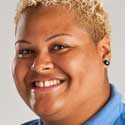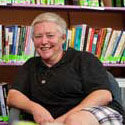U-Michigan launches strategic vision, pledges to be ‘the defining public university’

After a year of gathering input from the campus community, the U-M administration has released its strategic vision for the next 10 years. Vision 2034 — detailed in an initial 43-page report — calls upon the University to leverage its interdisciplinarity and excellence at scale to educate learners, advance society, and make groundbreaking discoveries.
-
U-M to invest in its own startup businesses
The university could inject up to $25 million during the next decade into select venture-funded U-M startups—new companies built around inventions born in faculty members’ labs.
-
First geothermal facility opening on campus
When the new golf practice facility opens its doors this fall, it will be the first geothermal facility at the University of Michigan, using the earth’s natural energy to heat and cool the space.
-
Michigan makes sustainability a high priority
President Coleman announced new goals and new funding for sustainability both on campus and in U-M research, including a cut in carbon emissions of 25%, a 40% reduction of waste sent to landfills and new stormwater controls to protect the Huron River.
-
Bailed-out banks issued riskier loans
Banks that received federal bailout money ended up approving riskier loans and shifting capital toward risky investments after getting government help, say U-M researchers. Further, these banks were no more likely to issue loans, overall, than non-TARP banks, in contrast to the declared objective of the federal program to increase lending.
-
'I'm going to college!'
How do you create a ‘culture of college’ in disadvantaged high schools?
-
'There's a community out there for you'
The Spectrum Center, which serves and advocates for students of various sexual orientations, was the first of its kind on any American campus. This fall it is celebrating its 40th anniversary. How times have changed.
Columns
-
President's Message
AI’s promise for teaching and learning
As U-M customizes Gen AI tools on campus, President Ono focuses on best practices defined by accessibility, privacy, integrity. -
Editor's Blog
Something old, something new
Who's ready for an excellent adventure? Just keep an eye peeled for the (virtual) hot lava. -
Climate Blue
Order from disorder
Ricky Rood explains the organizing principles behind weather, which is how we feel climate. -
Health Yourself
Getting a leg up on sciatica and piriformis syndrome
Victor Katch compares and contrasts sciatica and piriformis syndrome and explains how to ease that pain in your butt.
The Art Show
Founded in 1990 with a single theatre workshop, the Prison Creative Arts Project (PCAP) is a program of U-M’s Residential College. Courses serve as gateways for undergraduate participation in prison arts workshops and provide academic training in issues surrounding incarceration and practical skills in the arts. The program’s Annual Exhibition of Artists in Michigan Prisons (“the art show”) is one of the largest exhibits of artwork by incarcerated artists in the world. The annual exhibition, free to the public, is presented with support from the Michigan Arts and Culture Council. It runs through April 2 at the Duderstadt Gallery. (Click on the images to enlarge. Images are courtesy of PCAP.) Learn more about PCAP.


















